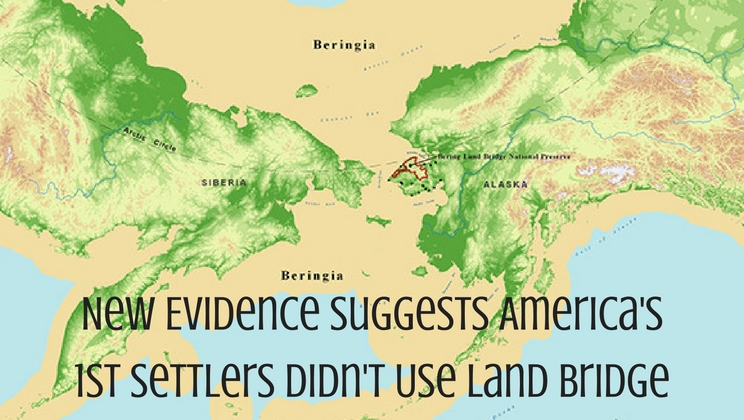Mounting evidence first Americans didn’t use Bering Land Bridge
Posted by staff / August 12, 2016
A massive land bridge opening up to allow the first settlers of the American continents stroll across has been the stand-by explanation for the last century, yet scientists are stumped on how to explain sites that appear to pre-date the Bering Land Bridge.
As Mental_Floss’ Megan Gannon explained:
Recently, several before-Clovis sites have been discovered in the Americas. Fossilized feces more than 14,000 years old have been found in Oregon’s Paisley Caves. Stone toolsalongside mastodon bones in Florida were recently found to be 14,550 years old. And much further away from northwestern Canada, in southern Chile, humans inhabited Monte Verde at least 14,000 years ago (and possibly even earlier).
Studies of sediment cores indicate the Bering Land Bridge would only have been passable between 12,600 and 10,000 years ago.
Did the first settlers come by boat across the Pacific? No one knows at this point, but that it wasn’t by the bridge.
Full story at Mental_Floss.
Photo credit: NPS.gov
All the dates given are garbage. They are based on carbon dating, which is known to be unreliable past a couple thousand years. We don’t know how much carbon was in the air back then, or the creation/destruction rate of carbon in the air since then. And we would need to know all that EXACTLY to date these things. The reality is (big secret here), no science can date things past 1800BC or 3,800 years ago. Anything older is OPINION. That’s what no one wants to admit. There’s a lot of funding issues if suddenly “consensus” science turns into we-don-know science.
There is mounting evidence that the Clovis culture originated in Europe, and not Asia as has long been said by most archaeologists. The similarity of Clovis points to the western European Solutrean points is startling. Also, the oldest dated Clovis points were found in eastern Canada in a deposit that makes early Clovis finds much earlier than the usual 12,000 b.p. (before present). The Solutreans were capable of fluting there points, a common Clovis trait: something entirely unknown in Siberian sites and found only once on an Alaskan point (which might have been accidental). The big problem in US archaeology now, in my opinion, is that prehistoric archaeology is becoming a dying career due to political and ethnic pressures. Many universities no longer even offer courses any more. Also, private collectors have been stigmatized into silence, by a radical branch of the field, to the great detriment to knowledge, as the vast majority of early finds are discovered and described by collectors, and these finds are totally ignored by many, if not most of today’s archaeologists.